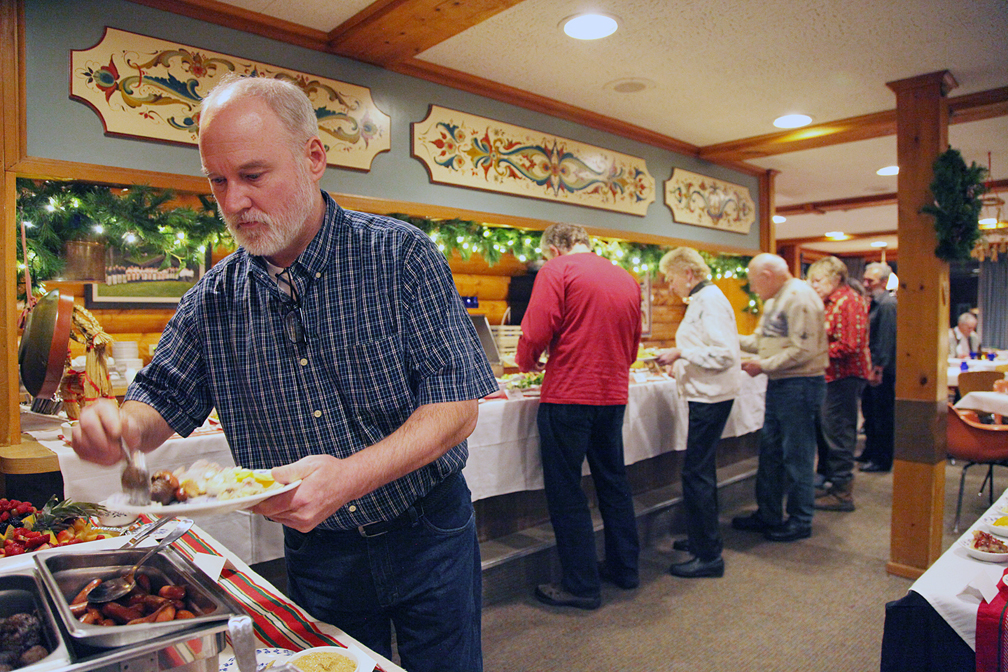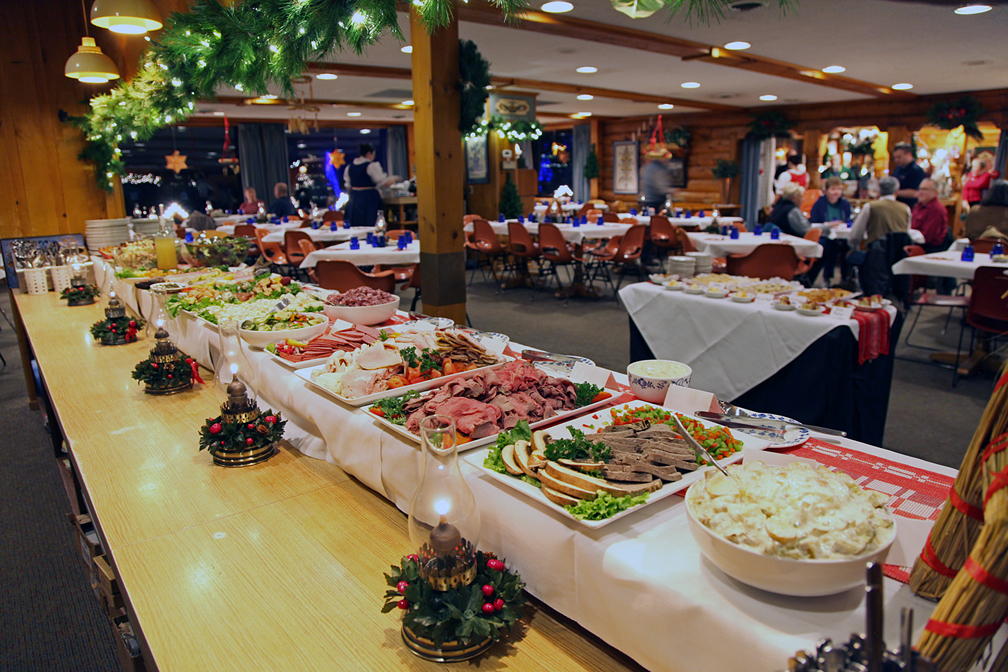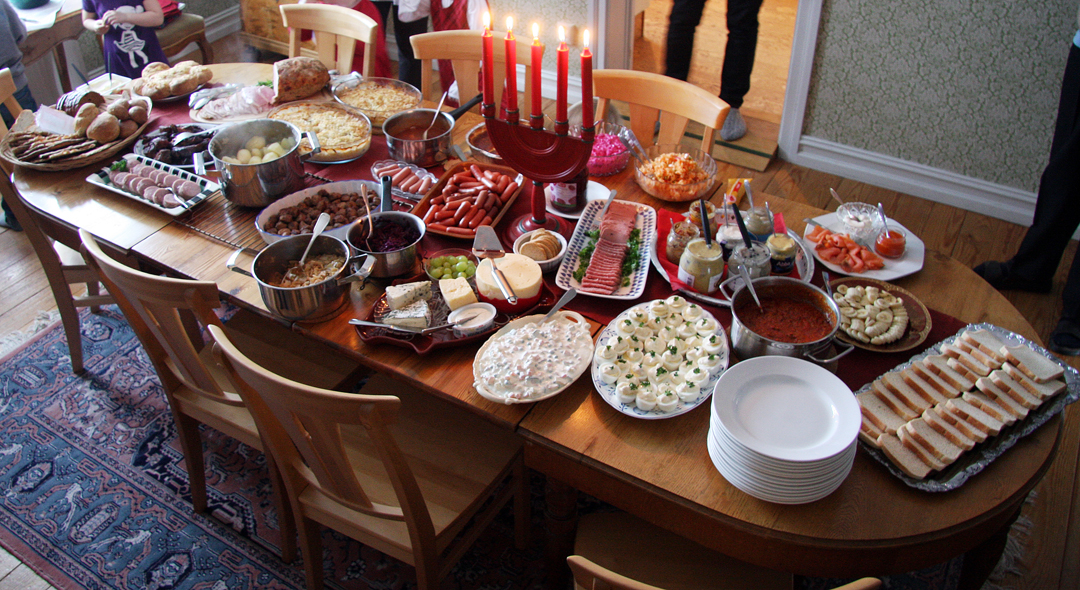It's time for the julbord
The Swedish Christmas table as we know it today - an opulent cousin to the smörgåsbord.
-
 ... when among Swedes, follow the "rules" - take a fresh plate between dishes and start with herring and fish dishes
... when among Swedes, follow the "rules" - take a fresh plate between dishes and start with herring and fish dishes -
-
Many Swedes eat their julbord (Christmas table or smörgåsbord) at work. About 70 percent of the country's working population will be invited to a julbord through their workplace. That's 3.5 million Christmas table dinners just to begin with, not counting private settings, which come later.
-
 Looking for a special gift? A gift that will last for a long time? Look at our website under <a href="http://www.nordstjernan.com/subscribe">SUBSCRIBE</a> It will last for as long as you'd like...
Looking for a special gift? A gift that will last for a long time? Look at our website under <a href="http://www.nordstjernan.com/subscribe">SUBSCRIBE</a> It will last for as long as you'd like... -
-
The development to our modern Christmas table really started in the 1800s with an invention that would change the art of cooking forever: the iron stove. Previously, most people cooked food, but with a stove you had the option to roast, bake and cook in a whole new way. This is when common people started cooking a variety of foods and snacks, often to accompany their aquavit because, truth be told, the snaps came first.
In the late 1800s high-end restaurants began serving smorgasbords, and with the Olympic Games in Stockholm in 1912, the world was presented with the Swedish specialty. The Swedish Academy mentioned the word "julbord" for the first time in 1919 and thus the Christmas smorgasbord was in Sweden to stay. It was introduced to the world when it was presented in the Swedish Pavilion at the World's Fair in New York in 1939. For two generations, Al Johnson’s Swedish Restaurant & Butik in Wisconsin’s Door County peninsula, has offered the only Scandinavian Christmas smörgåsbord (Julbord) in the area. Swedish for sure: Homage to the Swedish Christmas ham (and inspiration to make your own) -
 The julbord has adopted many dishes from the smörgåsbord, such as meatballs, sausages and Jansson's temptation - like at Al Johnson's Julbord in Sister Bay, WI.
The julbord has adopted many dishes from the smörgåsbord, such as meatballs, sausages and Jansson's temptation - like at Al Johnson's Julbord in Sister Bay, WI. -
Early differences - regional variations
Until the 1960s, there were large differences between julbord and smörgåsbord, but the 1970s would change that. The julbord adopted many dishes from the smörgåsbord, such as meatballs, sausages and Jansson's temptation. In the 1970s, a separate Christmas lunch (with dopp i grytan and ham) and Christmas dinner (with lutefisk and Christmas porridge) were combined to create today's julbord.
Dopp i grytan is one of those dishes that drops in popularity at the julbord. Perhaps because we no longer concern ourselves with old bread. This was how dopp i grytan ("dip into the pot") came into being. We dipped slightly stale bread in the broth after the boiling of the ham and made use of bread that would otherwise have been thrown away.
There is plenty of information on what’s popular at the julbord. The Christmas ham (“julskinka”) is always at the top. This time of year 650,000 pigs are slaughtered — only for Christmas. When we consider that the total number of pigs slaughtered in Sweden each year is 2.9 million, we realize that Christmas is a very important time of year for the pork business.
Other than ham julbord ingredients can vary "locally" with significant dishes special for different parts of the country.
In northern Sweden there is more game at the julbord and dopp i grytan is made with flatbread (tunnbröd) — while in southern Sweden it’s vörtbröd, bread flavored with wort.
In Västergötland they serve grynkorv -similar to potato sausage - and brown beans (bruna bönor), sweetened with Swedish syrup (sirap).
On Gotland it’s saffron pancakes, in Småland cheesecake (ostkaka, really made of curd) and in Uppland often a Christmas pike (julgädda) is served for the Christmas table.
Everyone eats herring (sill) — of all kinds. Gravad lax, lutefisk and aforementioned Christmas ham. Different kinds of sausages (korv), brawn, headcheese (sylta), meatballs (köttbullar), spare ribs (revbenspjäll), a variety of cabbage (kål), to name a few.
Naturally, rice porridge is served with a hidden almond; according to folklore, whomever gets the almond will be married in the coming year.
So, Christmas is healthy? Perhaps we should follow the Sustainable Santa and rainbow principle: if it is colorful, it is often healthy. So, do not hesitate to mix up all the other goodies with vegetables with more colorful hues from the table. And, when among Swedes, follow the "rules" - take a fresh plate between dishes and start with herring and fish dishes, cold meats and then finally the warm dishes.
God Jul -
 Swedish Christmas table "julbord' in a private Swedish home photographed by David Castor.
Swedish Christmas table "julbord' in a private Swedish home photographed by David Castor. -
-
